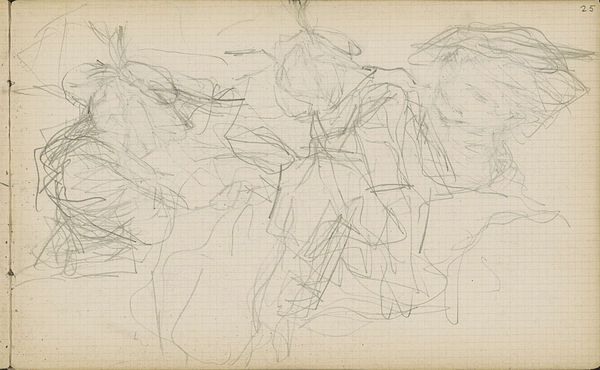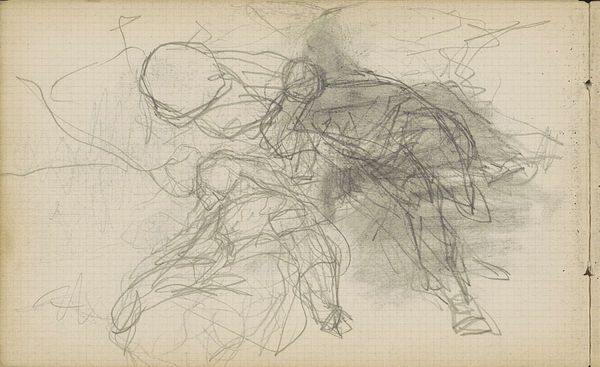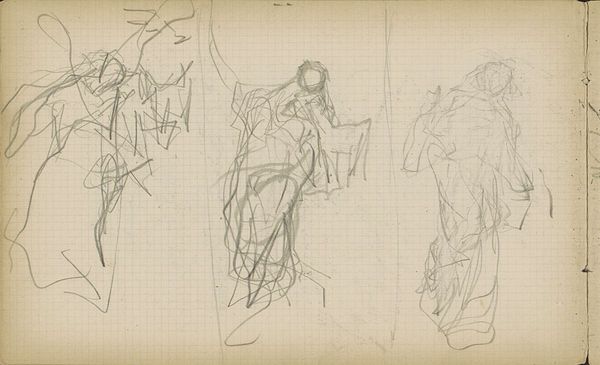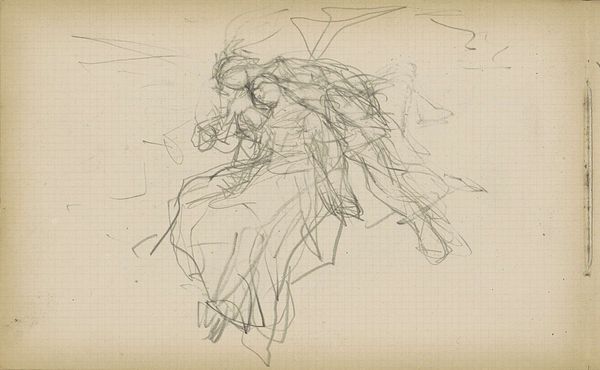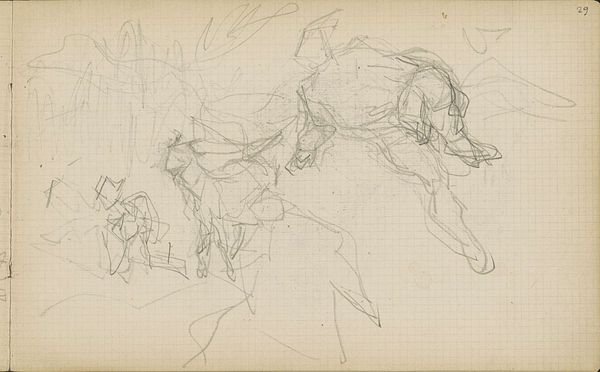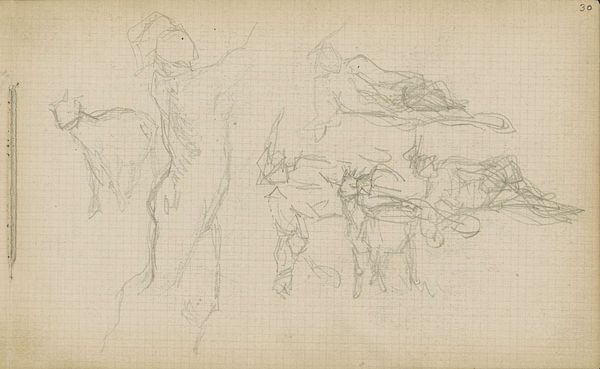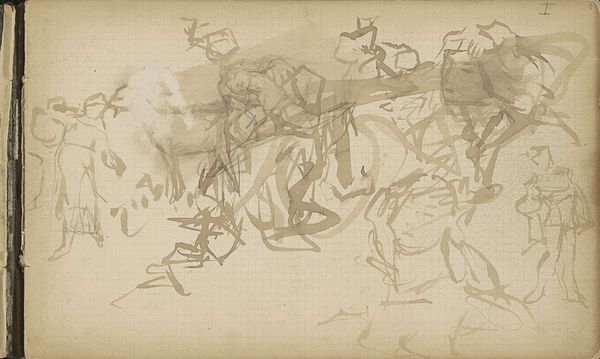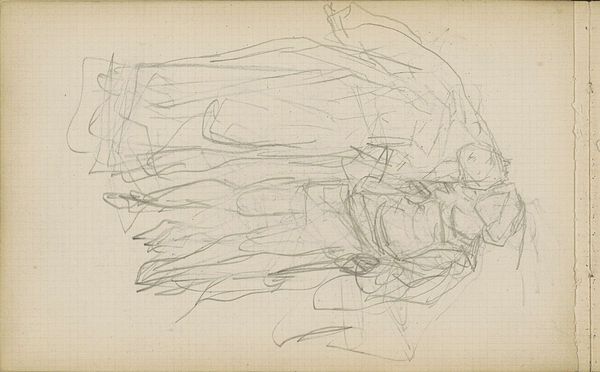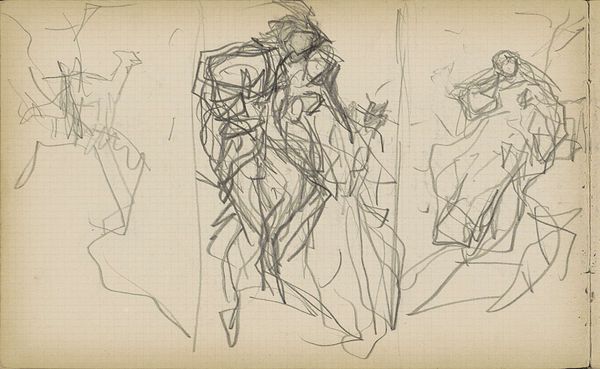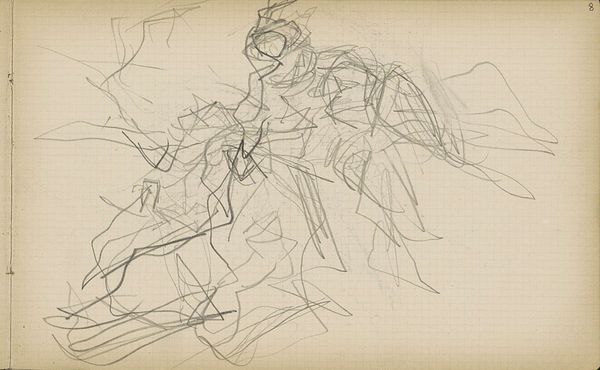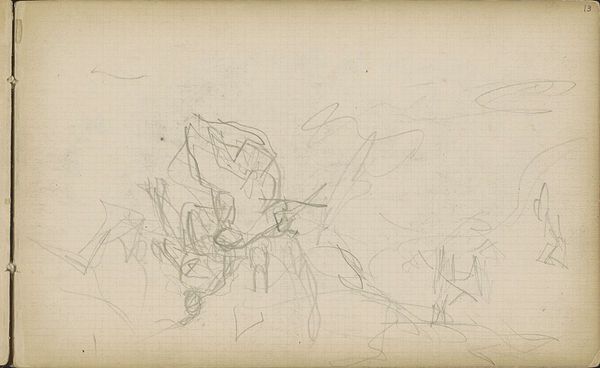
drawing, paper, pencil
#
portrait
#
drawing
#
figuration
#
paper
#
pencil
Copyright: Rijks Museum: Open Domain
Curator: Here we have "Liggende figuren," or "Reclining Figures," a pencil on paper work attributed to Matthijs Maris. Its creation date is approximated between 1849 and 1917, and it's held here at the Rijksmuseum. Editor: It looks unfinished, raw almost. The lines are frantic, like the artist was trying to capture a fleeting moment or sensation rather than aiming for a polished depiction. There’s a definite sense of movement, even chaos. Curator: Exactly. Maris was working during a fascinating period of transition in art. Realism was giving way to impressionism, and artists were grappling with new ways to represent the world and human experience. In terms of representation, you see a sort of unfinished and sketchy figuration. Consider the ways in which art making during the turn of the century provided a radical shift in our contemporary understanding of visual culture, allowing the viewer a chance to piece the narrative together. Editor: Right, it challenges the traditional power dynamic of the artist as the all-knowing creator. Here, the viewer is invited to participate, to fill in the blanks. I mean, the very title, "Reclining Figures," is so general. It doesn't dictate a narrative; it simply presents a possibility. Do you consider this intentional? Is it commentary on leisure, labor, alienation? I want to believe there is commentary surrounding gender at play, as well. Curator: Certainly, one can argue Maris was deliberately exploring the breakdown of established societal norms and highlighting the ambiguous nature of modern life. You brought up alienation, I find it interesting you point that out because the turn of the century began a huge culture of loneliness due to increased access in travel and technology. You see this unravel in our very drawing and in other areas within our cultural landscapes. This sketchiness and refusal of academic styles was Maris’ response, perhaps a way of reclaiming his artistic autonomy and using abstraction in conjunction with realistic expression. The institutional support from Rijksmuseum supports this sort of open-ended reading. Editor: A valid point. This era presented shifts that left the public feeling out of touch from human connection, an art piece to depict the way the public feels is incredibly profound when analyzing the cultural implications behind this seemingly raw artwork. I'm left wondering how Maris' contemporaries responded to works like this. Curator: The art world was evolving and the establishment probably received him quite strangely and were befuddled by his ambiguous compositions. Editor: So, in the present day, looking at “Reclining Figures," I understand the context with the culture during this time and still sense those familiar tensions as our human nature hasn't transformed much today. I think its honest portrayal remains remarkably resonant. Curator: I agree, a snapshot of artistic struggle and a reflection of its era, continually encouraging us to see it anew.
Comments
No comments
Be the first to comment and join the conversation on the ultimate creative platform.
